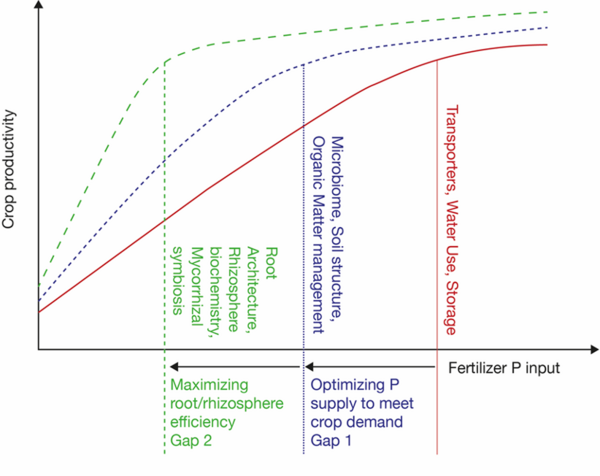Recently researchers from SolACE WP2 contributed to a book published on “Achieving Sustainable Crop Nutrition” edited by Prof. Zed Rengel from the University of Western Australia. Philip White and I, Tim Geroge from the James Hutton Institute in Scotland. In the chapter, concepts developed in our research for SolACE were elaborated on to produce a chapter entitled “Advances in understanding crop use of phosphorus”. In this chapter, we present information on the essential role of P in plants and how plants have evolved to maintain the supply of P to these essential functions. We discuss the concept of P-replete plants and what this means regarding both their physiological and genomic state and how this information can be used to manage crops more effectively. We then go on to discuss the inherent difference in P replete status and response to P deficiency seen between crop species and genotypes of crop species and discuss trade-offs between responses within an individual. We conclude with a discussion of what a crop ideotype for efficient use of P might be like and discuss how this information impacts our ability to design and implement sustainable agricultural systems in the future.
As part of this chapter, we present a conceptual model of how plant ideotypes and soil-based nutrient management can be deployed together to overcome the yield gaps apparent when inputs of phosphorus are reduced, see below. We suggest that overcoming the first yield gap can be achieved by soil-based nutrient management for optimising P supply to meet crop demand. Once this is achieved, the second yield gap can be narrowed by exploitation of root/rhizosphere efficiency and further saving P resource input. This combination of management and genotypes is the primary tenet of the SolACE project.
We conclude that “Management of P remains a critical issue for the economic and environmental sustainability of agriculture globally. It is therefore essential that we have appropriate understanding of the mechanisms by which plants acquire P from soil… However, at present it is evident that the full extent of the complexity of the trait-by-trait and trait-by-environment interactions that are associated with plant P nutrition are not well appreciated, and that our comprehension of the functional redundancy and compatibility of the mechanisms involved both within individual plants and between coexisting organisms is poor. It is therefore important that a whole cropping system approach to P management continues to be developed for a more sustainable agriculture.”
Additionally the chapter "Bio-effectors to optimize the mineral nutrition of crop plants" by Markus Weinmann and Günter Neumann also communicate SolACE results!
If you wish to know more about sustainable use of P by crops or this publication in particular, please contact Tim George.
More information
Links
bdspublishing.com:
Zenodo.org
- Chapter: Advances in understanding crop use of phosphorus
- Chapter: Bio-effectors to optimize the mineral nutrition of crop plants

 tap and then scroll down to the Add to Home Screen command.
tap and then scroll down to the Add to Home Screen command.